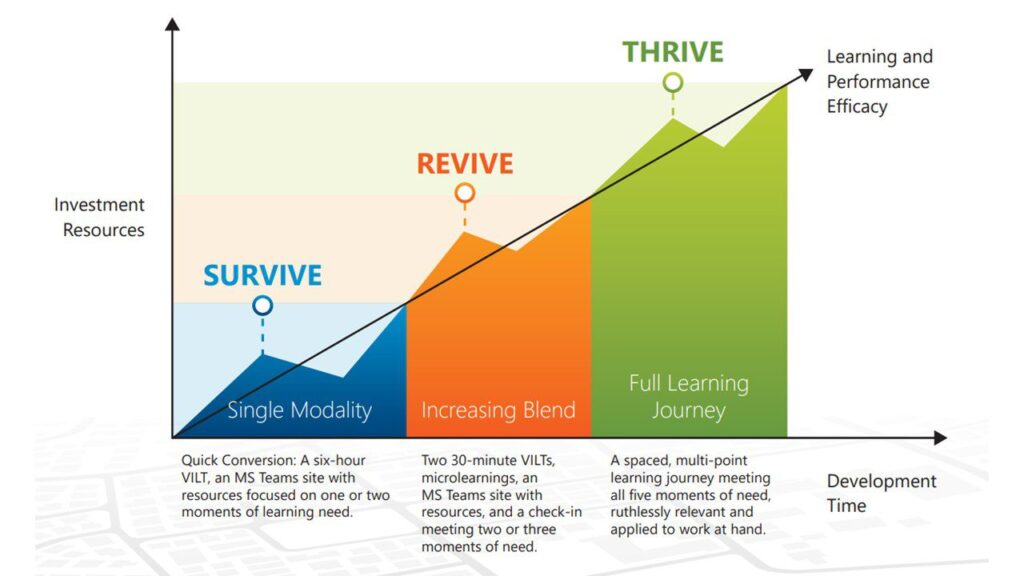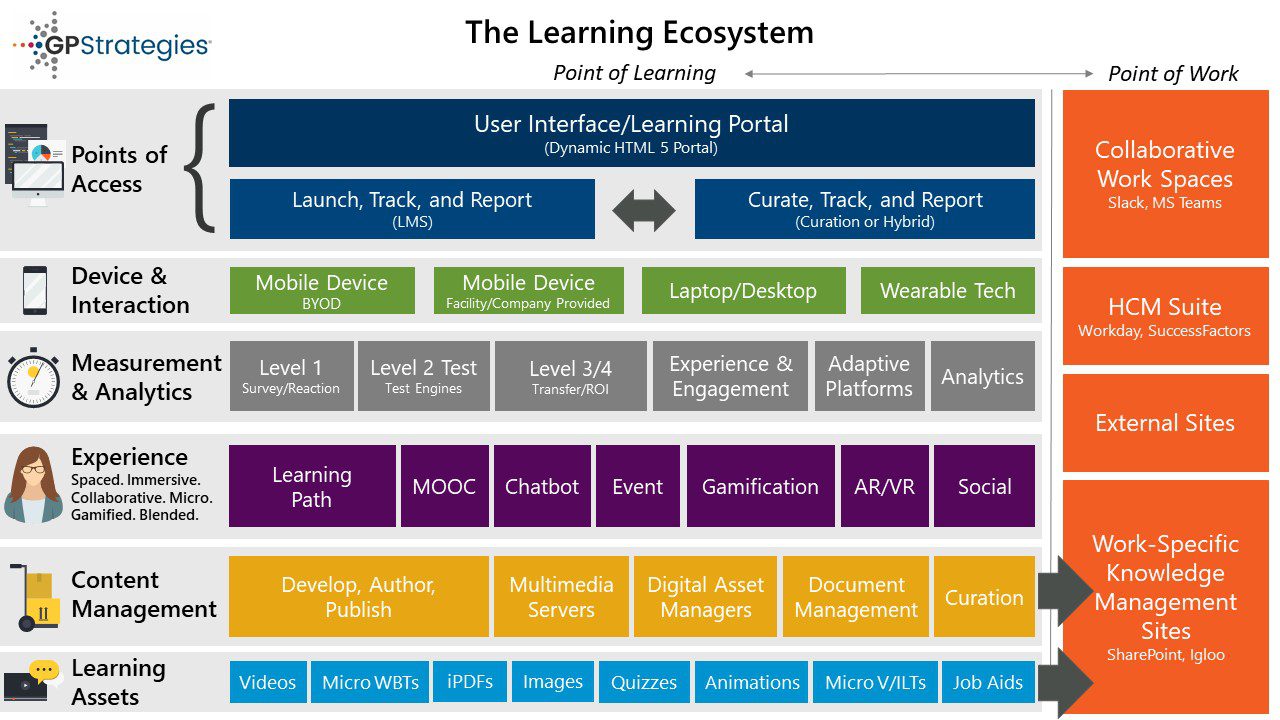Although we’re starting to see some in-person learning delivery return, virtual delivery and new virtual strategies implemented last year and this year are going to stick around with a more hybrid approach.
This article outlines four effective strategies and best-practice approaches that are proving highly effective to build a strategic roadmap for virtual training:
- Charting a survive, revive, and thrive roadmap
- Developing a virtual training technology and content strategy
- Building a multidisciplinary team of virtual training specialists
- Establishing a virtual academy
A Look Inside
Chart a Survive, Revive, and Thrive Roadmap
The three approaches are part of a continuum and most organizations will probably find themselves in some form of survive or revive since it’s tough to implement full thrive strategies during disruption. Ultimately, the first two approaches should be designed to leave organizations with a pathway to thrive.
The following graphic is an example of how this continuum can look for an eight-hour classroom-based ILT.

What’s critical to remember about each of these approaches is that they can be accomplished as part of long-term goals. All too often, we see companies implement a survive strategy of quick conversions that don’t account for future needs. When charted correctly, each approach can be implemented depending on the current resources available and still set up learning teams for future success without repeating work and increasing costs.
Creating a Virtual Learning Ecosystem
Technology is important. It’s helping solve old problems in new ways. But, at the same time, new problems are emerging. Technology by itself doesn’t drive the engagement and impact learning teams need to achieve.
We’ve seen many companies implement technologies with low impact. Our analysis finds it is usually due to a combination of core challenges:
- Simple conversions failing to account for virtual delivery and learner needs
- Low adoption and engagement from virtual programs lacking cohesion
- Complex systems causing both backend and user confusion
- Content not distributed, mapped, or presented in an effective learner journey
The selection and content choices should be mapped to a learner journey designed to meet specific goals for each program.
The following graphic is a sample of a learning ecosystem we’ve used to illustrate this point. It isn’t about choosing everything on this map, but about selecting some elements that will create the learning experience you’re hoping to create.

